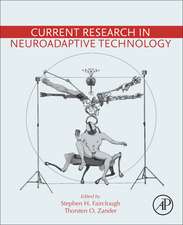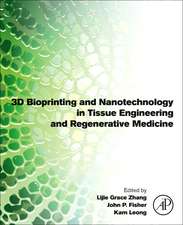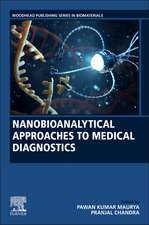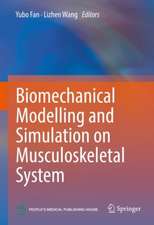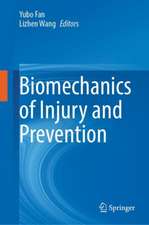Wearable Systems Based Gait Monitoring and Analysis
Autor Shuo Gao, Junliang Chen, Yanning Dai, Boyi Huen Limba Engleză Paperback – 18 mar 2023
| Toate formatele și edițiile | Preț | Express |
|---|---|---|
| Paperback (1) | 524.51 lei 3-5 săpt. | +19.91 lei 7-13 zile |
| Springer International Publishing – 18 mar 2023 | 524.51 lei 3-5 săpt. | +19.91 lei 7-13 zile |
| Hardback (1) | 777.62 lei 6-8 săpt. | |
| Springer International Publishing – 17 mar 2022 | 777.62 lei 6-8 săpt. |
Preț: 524.51 lei
Preț vechi: 552.11 lei
-5% Nou
Puncte Express: 787
Preț estimativ în valută:
100.44€ • 103.49$ • 84.28£
100.44€ • 103.49$ • 84.28£
Carte disponibilă
Livrare economică 31 ianuarie-14 februarie
Livrare express 17-23 ianuarie pentru 29.90 lei
Preluare comenzi: 021 569.72.76
Specificații
ISBN-13: 9783030973346
ISBN-10: 3030973344
Pagini: 238
Ilustrații: XII, 238 p. 99 illus., 81 illus. in color.
Dimensiuni: 155 x 235 x 17 mm
Greutate: 0.36 kg
Ediția:1st ed. 2022
Editura: Springer International Publishing
Colecția Springer
Locul publicării:Cham, Switzerland
ISBN-10: 3030973344
Pagini: 238
Ilustrații: XII, 238 p. 99 illus., 81 illus. in color.
Dimensiuni: 155 x 235 x 17 mm
Greutate: 0.36 kg
Ediția:1st ed. 2022
Editura: Springer International Publishing
Colecția Springer
Locul publicării:Cham, Switzerland
Cuprins
Introduction.-Characteristics of Gait.- Wearable Gait Detection Technologies.- Gait Analysis Algorithms.- Medical Applications.- Occupational Applications. Conclusions.
Notă biografică
Shuo Gao, Ph.D., is currently an associate professor at the Beihang University, Beijing, China. He received his Ph.D. in electrical engineering from the University of Cambridge and from 2017 to 2018 was a research associate with University College London, UK. His area of expertise is wearable-system development. Professor Gao has published over 70 articles as the first/last author for peer-reviewed journals and flagship conferences and has been awarded 30 patents in the United States, United Kingdom, and China. He is co-author of the books Touch-Based Human-Machine Interaction: Principles and Applications (Springer, 2021) and A Flexible Multi-Functional Touch Panel for Multi-Dimensional Sensing in Interactive Displays (Cambridge University Press, 2019). He serves on several IEEE technical committees in various capabilities and is a member of the Editorial Board for Materials, Frontiers in Electronics, and Semiconductor Science and Information Devices. In terms of industrial experience, he has worked as a hardware engineer at SIGPRO, Ottawa, Canada, a system engineer at Ciena Corporation, Ottawa, Canada, and a technique consultant at Cambridge Touch Technologies Inc., Cambridge, UK. He is an expert group member of BOE Technology Group Co., Beijing, China.
Jun-Liang Chen is a lead engineer at Smart Electronics Inc., Beijing, China. He received his bachelor’s and master’ degrees in engineering from Beihang University, Beijing, China. His research interests include piezoelectricity, circuit design, and signal processing and he has published more than 10 peer-reviewed research and review articles.
Yan-Ning Dai is a biomedical scientist at Smart Electronics Inc., Beijing, China. She received a bachelor’s degree with a double major in instrumentation engineering and biomedical engineering and a master’s degree in engineering from Beihang University, Beijing, China. Her research focuses on flexible electronics for human-machine interaction and health monitoring. She has published more than 20 peer-reviewed articles and patents.Boyi Hu, Ph.D., has been an assistant professor of industrial and systems engineering at the University of Florida since 2018. He received his Ph.D. degree from West Virginia University majoring in Ergonomics in 2016 and worked as a post-doc research fellow at Harvard T.H.Chan School of Public Health from 2016 to 2018. His research interests are ergonomics, biomechanics, system safety, and human-robot interaction. He has published over 40 peer-reviewed articles. As PI or Co-PI, his research has been funded by multiple US federal agencies, including the National Science Foundation, Department of Transportation, USDA National Institute of Food and Agriculture, and the National Institute for Occupational Safety and Health with the direct cost of over $4M in total. He has been serving as an associate editor for IEEE Transactions on Human-Machine Systems since 2020.
Yan-Ning Dai is a biomedical scientist at Smart Electronics Inc., Beijing, China. She received a bachelor’s degree with a double major in instrumentation engineering and biomedical engineering and a master’s degree in engineering from Beihang University, Beijing, China. Her research focuses on flexible electronics for human-machine interaction and health monitoring. She has published more than 20 peer-reviewed articles and patents.Boyi Hu, Ph.D., has been an assistant professor of industrial and systems engineering at the University of Florida since 2018. He received his Ph.D. degree from West Virginia University majoring in Ergonomics in 2016 and worked as a post-doc research fellow at Harvard T.H.Chan School of Public Health from 2016 to 2018. His research interests are ergonomics, biomechanics, system safety, and human-robot interaction. He has published over 40 peer-reviewed articles. As PI or Co-PI, his research has been funded by multiple US federal agencies, including the National Science Foundation, Department of Transportation, USDA National Institute of Food and Agriculture, and the National Institute for Occupational Safety and Health with the direct cost of over $4M in total. He has been serving as an associate editor for IEEE Transactions on Human-Machine Systems since 2020.
Textul de pe ultima copertă
Wearable Systems Based Gait Monitoring and Analysis provides a thorough overview of wearable gait monitoring techniques and their use in health analysis. The text starts with an examination of the relationship between the human body’s physical condition and gait, and then introduces and explains nine mainstream sensing mechanisms, including piezoresistive, resistive, capacitive, piezoelectric, inductive, optical, air pressure, EMG, and IMU-based architectures. Gait sensor design considerations in terms of geometry and deployment are also introduced. Diverse processing algorithms for manipulating sensors outputs to transform raw data to understandable gait features are discussed. Furthermore, gait analysis-based health monitoring demonstrations are given at the end of this book, including both medical and occupational applications. The book will enable students of biomedical engineering, electrical engineering, signal processing, and ergonomics and practitioners to understand themedical and occupational applications of engineering-based gait analysis and falling injury prevention methods.
- Provides students and practitioners with an overview of wearable gait monitoring techniques;
- Includes detailed insole sensor design considerations;
- Features engineering-based gait analysis methods.
Caracteristici
Provides students and practitioners with an overview of wearable gait monitoring techniques; Includes detailed insole sensor design considerations; Features engineering-based gait analysis methods.

